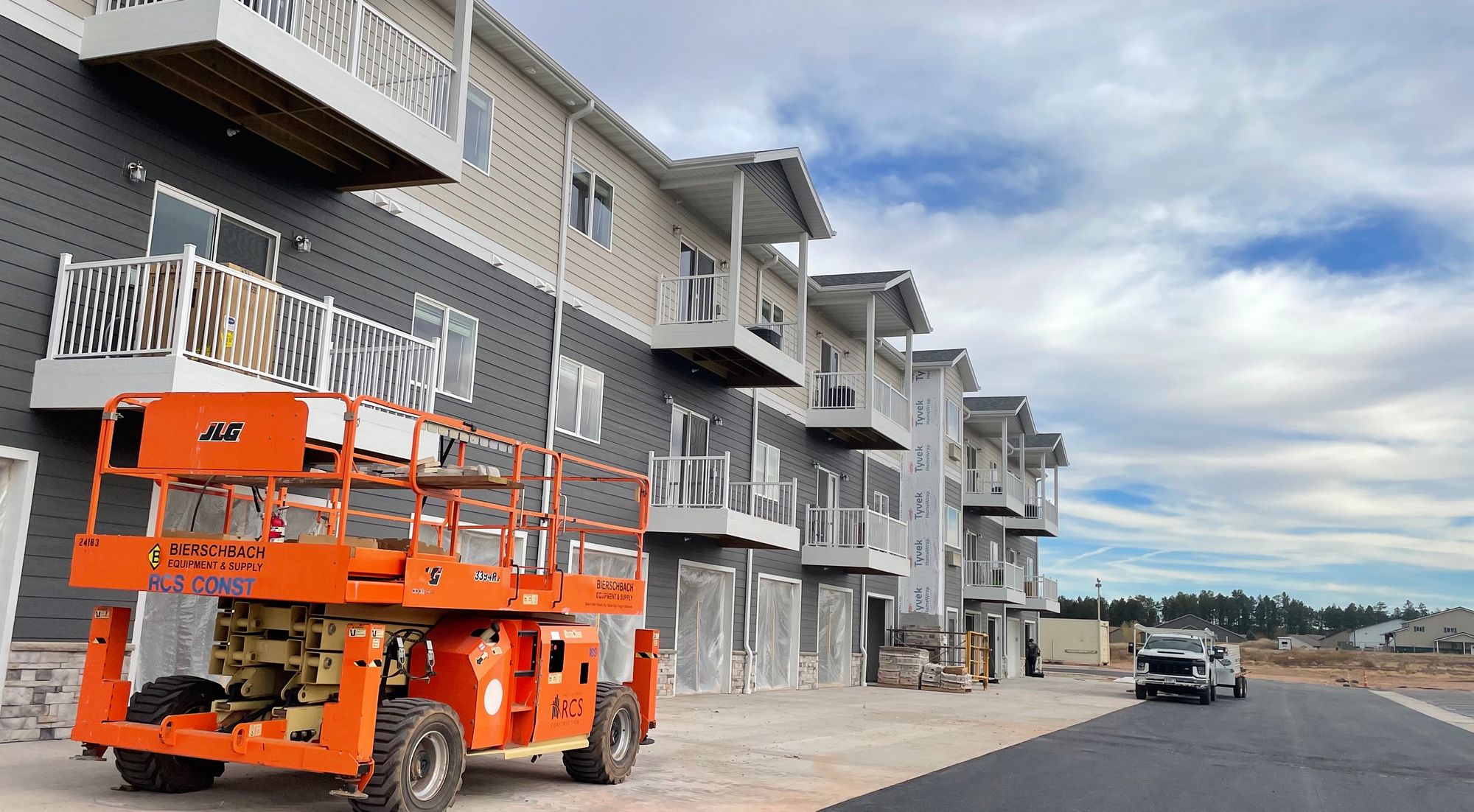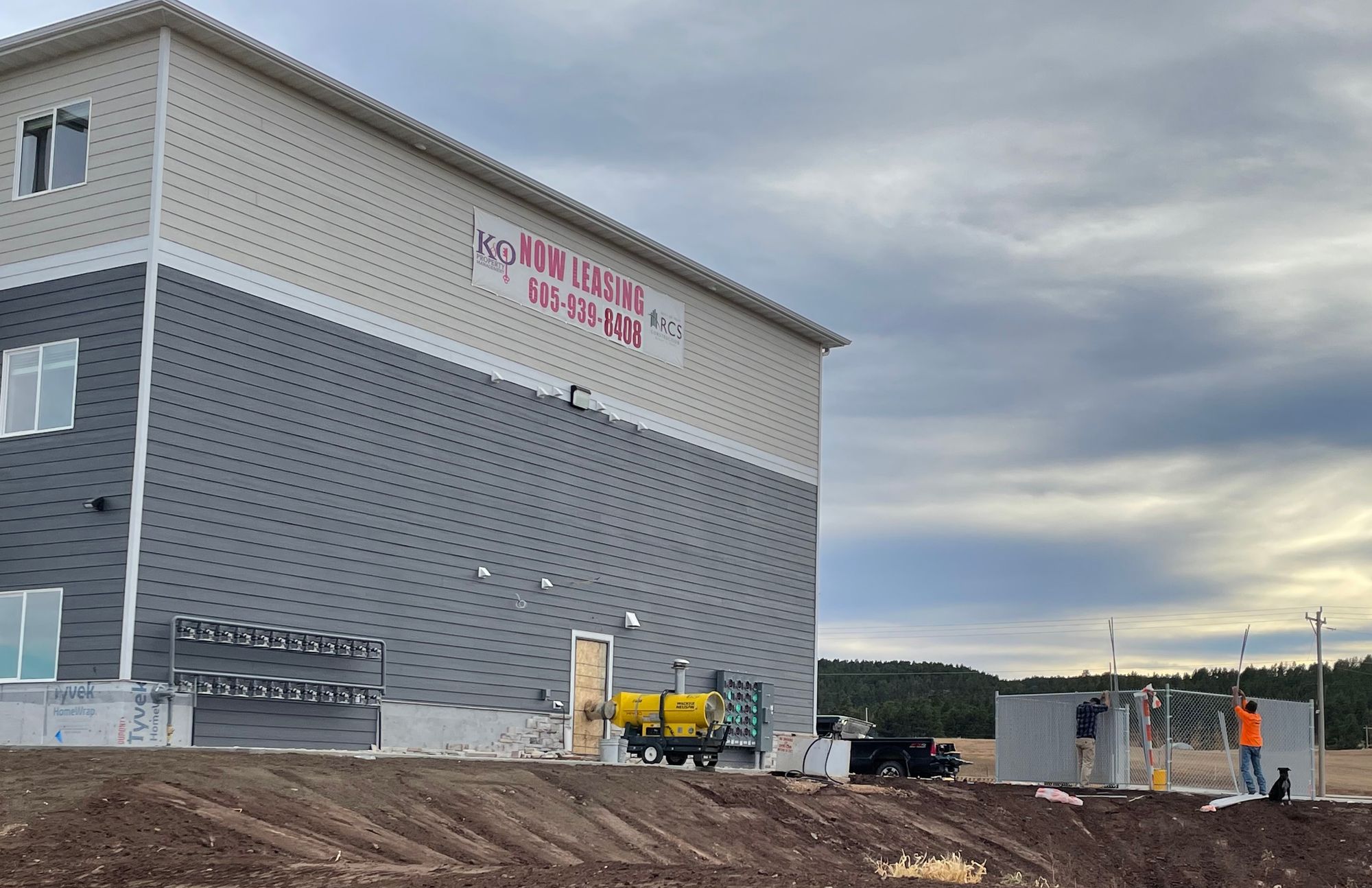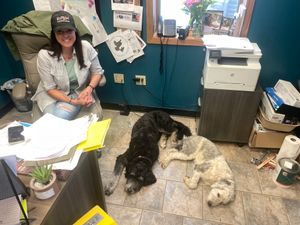Steve Westra, head of the Governor’s Office of Economic Development, announced in April that he is resigning from his position effective May 22, 2023.
No formal reason for the resignation was given, though Gov. Kristi Noem said in a statement: “South Dakotans are building the strongest economy in America with the lowest unemployment rate of all time. Steve helped provide the level playing field to make that possible. I want to thank him for his leadership on behalf of the people of South Dakota.”
The announcement by Westra follows the March news regarding Lorraine Polak, the executive director of the South Dakota Housing Development Authority, who has resigned from her position. Polak had worked in some capacity with SDHDA for more than two decades; she was appointed to the top post by Gov. Kristi Noem in 2021.
The original story from Nov. 22, 2022, is below.
The sometimes strained relationship between Republican Gov. Kristi Noem and the GOP-led Legislature has led in part to delayed implementation of a $200 million program aimed at building critical workforce housing in South Dakota.
In a series of emails sent to South Dakota News Watch, the Republican governor and a prominent GOP senator each blamed the other for the failure of the program to launch on time.
The loan and grant program that was supposed to begin disbursing funds for housing infrastructure in summer 2022 is on hold at least until the next legislative session in 2023 or possibly beyond that.
In an email to News Watch, Gov. Noem’s office blamed the GOP leadership in the state Senate for refusing to work with her on the bill that authorized the spending, for changing her initial plan and instead concocting a “scheme” that put the program’s goals in jeopardy.
“We are disappointed but not surprised” the program has stalled, the governor’s email stated. “Rather than work with Governor Noem on this plan, Senate leadership preferred to draft their own scheme. Many legislators assured the Governor that this scheme would work, and she took them at their word and signed their bill. Unfortunately, we have now seen that this scheme did not work as Senate leadership stated it would, and the $200 million is lying dormant.”
News Watch shared the governor’s statements with Sen. Lee Schoenbeck, R-Watertown, who is president pro tempore in the Senate. In a subsequent email to News Watch, Schoenbeck placed blame for the stalled funding program on Noem.
“There’s nothing wrong with the law,” Schoenbeck wrote. “To accommodate the Governor’s complaints and so she will drop both of her threats to sue [the South Dakota Housing Development Authority], we have drafted a bill. If [the governor] dropped her threats, money could go out now.”

Schoenbeck declined to respond to a follow-up email seeking clarification of his statements about threats or complaints by the governor.
The governor’s office then denied that Noem used threats of any kind to derail the program.
“The Governor’s concerns about this legislation have been laid out clearly and publicly in multiple letters to the Housing Authority and to the legislature,” Noem wrote in an email to News Watch sent by her spokesman Tony Mangan. “The Board is independent from the Governor’s oversight; therefore, Governor Noem has no legal authority over how the Board uses or does not use these dollars. The Governor has made no threats whatsoever and any allegation is false.”
Housing coverage from News Watch: Experts say developing more affordable housing is biggest need in market
The squabbling between Noem and Senate leaders over the housing funds is not the first time the governor has sparred with legislative leaders from her own political party.
Earlier this year, she battled with conservative Republicans in the House of Representatives over which branch of government — the executive or legislative — should have control over disbursement of hundreds of millions of federal dollars the state received during the COVID-19 pandemic. During the session, some of Noem’s key legislative proposals on abortion, critical race theory and COVID-19 vaccine exemptions were derailed by the GOP-led Legislature. In 2021, Noem openly criticized the Legislature for not supporting changes to a bill regarding transgendered players in youth sports. And Noem has publicly fought a war of words with Republican Speaker of the House Spencer Gosch, R-Glenham, who Noem said does not like her for some reason.
“I’m screwed either way, no matter what I say,” the governor said at one point. She later added: “He’s looking for a reason to blame me for everything.”

Lost construction season
Delaying delivery of the $200 million for a year or more is bad news for communities that are in great need of workforce housing, and for people trying to find a place to live in South Dakota, said Julie Johnson, an Aberdeen attorney who lobbies the Legislature on behalf of a number of mostly nonprofit housing agencies. The program would use $150 million in state money and $50 million in federal funds for loans and grants to developers who agree to build workforce housing in big cities and small towns across the state.
“We missed a whole construction season, and that’s a big deal because you don’t do a lot of infrastructure development in the winter,” she said.
Johnson said her clients see major value in the program’s ability to pay for infrastructure such as streets, water lines and sewers for a number of types of housing in South Dakota, ranging from workforce housing to senior housing to rehabilitation of existing older homes with aging or inadequate infrastructural components. A recent state report noted that South Dakota needs about 10,000 more homes due to growth, and added that a lack of housing is holding back businesses from expanding in the state. None of the money in the program was designated for construction of homes, only for infrastructure to expedite home construction.
“A little bit of this money goes a long way across South Dakota in helping various kinds of housing efforts right now,” Johnson said.
The workforce housing problem exists across the state but is most acute in the state’s largest city of Sioux Falls, according to Debra Owen, vice president of government relations for the Sioux Falls Chamber of Commerce.
According to data from the city, Sioux Falls is home to 36% of the state workforce, has seen about 23,000 new residents from 2015-2020, and has 43% of the open jobs in the state. Meanwhile, city officials estimate Sioux Falls will need 7,000 more housing units to accommodate growth before 2025 at a time when affordable housing has fallen by 15% overall.
“If you’re coming to Sioux Falls for the first time, you’re going to see houses being put up all over the place, but a lot of those houses are being built for people who moved here two or more years ago,” Owen said. “We don’t have any houses for people who are moving in now or next year, so the need is pretty great here as far as where can we find housing with good prices for these people to come to our city to live.”
Owen said chamber members in Sioux Falls stand ready to provide input into the process next legislative session to fine-tune the infrastructure funding program so it can be implemented as soon as possible.
“We’re all disappointed to some extent, but we understand the process can be a little slow,” Owen said. “We’re still moving forward with the tools that we’ve got, and we’ll continue to work with the governor and legislature to find a path forward so all of our state can benefit from those dollars.”

Lack of clarity in legislation
On a basic level, the concerns that led to the delay of the housing program centered around who would disburse the funds and what type of housing the program would support.
The program was announced as a priority by Noem in her 2022 budget address, and the bill to provide for the funding originated in her economic development office.
Initially, Noem wanted the Governor’s Office of Economic Development to review applications and make funding awards, but the state Senate amended the measure late in the 2022 session to allow the independent South Dakota Housing Development Authority to manage the program. The amended bill that authorized the program, House Bill 1033, also transferred the $150 million in state funds to the Housing Opportunity Fund for disbursement, and transferred the $50 million in federal funds to the housing authority with some restrictions, according to Lorraine Polak, director of the housing authority.
Polak said the language in the final bill was unclear on whether the funds were supposed to be targeted to housing for low-income or moderate-income residents.
Throughout the legislative process, supporters of the program did not want to restrict the program funding for low- to moderate-income housing only.
Backers argued that workforce housing is not necessarily income-targeted housing and that the fund should not be limited to providing infrastructure for housing only income-qualified residents. The funding mechanism for the program was contained in House Bill 1033 during the 2022 legislative session.
As a result of the confusion around the intent of the legislation, the authority board voted this summer to delay implementation of the entire funding program until it received further clarification on intent from the Legislature, Polak wrote.
“The SDHDA Board of Commissioners determined that SDHDA could not appropriately administer the transferred funds without further clarification by the South Dakota Legislature,” Polak wrote to News Watch in an email.
Polak said the housing authority was aware of Noem’s concerns but was never threatened with legal action in any way.
“Governor Noem noted concerns as to the uncertainty regarding the funding, and the application of the targeting restrictions … in her signing memorandum,” Polak wrote in an email. “The Governor did not threaten to sue SDHDA, but pointed out that the uncertainty of HB 1033 creates risks for SDHDA and those seeking grants or loans.”
Polak said the authority received several applications from developers seeking some of the $50 million in federal funds, but alerted those applicants that the program was on hold.
Noem had telegraphed her concerns over how the money would be used in a bill-signing memo in March in which she said she was willing to sign the measure but was worried about the legality of disbursing funds for workforce housing from a fund typically used for income-targeted housing.
Noem also raised concerns in the memo that the housing authority was not in a position to disperse funds designated solely for infrastructure development and not for construction of actual dwellings.
Johnson said her clients believe that the housing authority, and not the Governor’s Office of Economic Development, is the best agency to manage and distribute the workforce housing funds.
“The housing authority has considerable expertise in meeting the state’s housing needs and using the resources available,” Johnson said. “They have a lot of expertise in this and the GOED essentially does not do housing except for a couple big projects. The language the GOED uses, and the language that developers all over the state use, are very different, because I think we’re talking very different housing needs out there.”
Regardless of who or which institution is to blame for the stalled housing program, the Legislature and governor need to regroup and pass a workable measure in 2023 so developers can begin using the money to get homes built in South Dakota, said Rep. Roger Chase, R-Huron, a major supporter of the housing program.
“We have to get clarification on who’s going to be running the program, how it’s going to be run, if it’s intended for low income or for all different types of housing projects in all South Dakota communities,” Chase said. “I was hoping we could get this done to where funds could go out year this year, and that’s why it’s important for us to get started on this so we’re ready to go in the beginning of session so we don’t lose next year’s construction season.”





